Definition: Mutual Inductance phenomenon happens between two neighboring coils. The first coil when fed AC voltage takes current and generates flux. The same flux links to the second coil and induces emf in it. The direction of induced emf is such that it opposes the reason for its production. The emf generated in the second coil is called the mutually induced emf and the phenomenon is called as mutual inductance. Its unit is Henry(H).
Let us take an example to understand the phenomenon of mutual inductance.
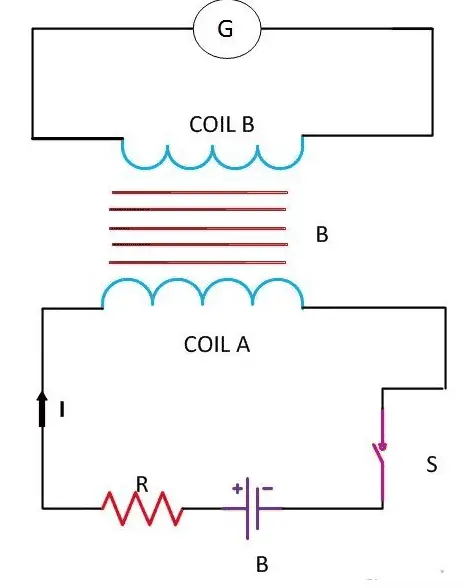
Two coils A and B are placed next to each other. When we close the switch S, the circuit completes and coil A draws current. The current drawn by coil A sets up the magnetic flux in the core. The same flux links to coil B and induces a voltage in it. The rate of change of current is done through varying the resistance R. With the change in the current of coil-A, the magnetic flux linking to coil B changes. The voltage induced in coil B changes with a change in the magnetic flux.
Thus, the voltage induced in the coil B depends on ;
- Mutual inductance(M) of the coils
- Rate of change of current in coil A
The mathematical expression for induced emf in coil B is;

Mutual Inductance Formula
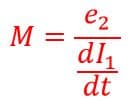
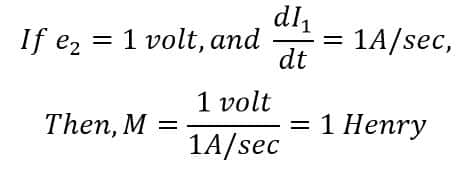
The mutual inductance of two coils is 1 Henry if emf induced in coil B is 1 volt when the rate of change of current in coil A is 1 ampere/second.
We can also express the mutual inductance in another way as shown below.
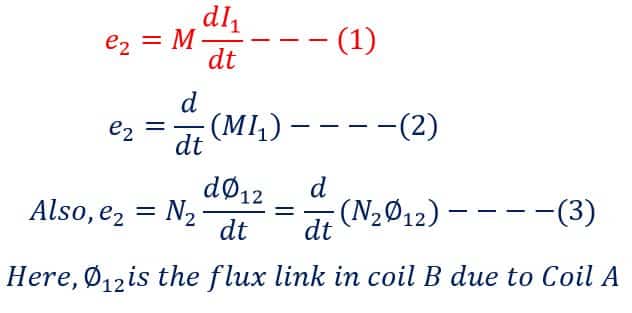
Equating equations (2) and (3), we get,
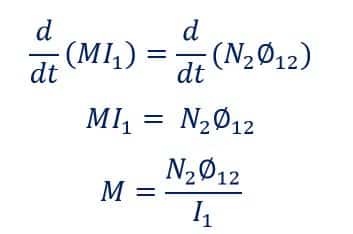
The following factors affect the mutual inductance(M).
- Number of turns in the secondary coil ( In the above case coil B)
- Cross-sectional area
- Distance between the coils
Mutual Coupling In the Magnetic Circuit
Mutual coupling exists when two or more coils are wound on the same magnetic core. The coils are said to be mutually coupled. When the current in one coil changes, it produces a magnetic flux that links to the coil itself and the other neighboring coil. Therefore, self-inductance and mutual inductance exist in each coil. For example, the transformer’s primary and secondary winding are mutually coupled.